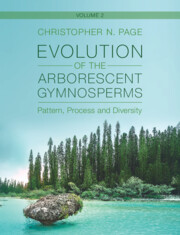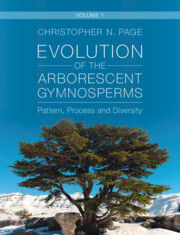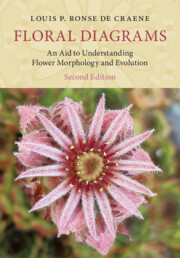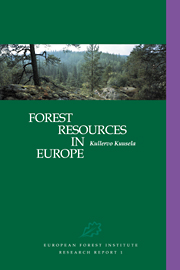Evolution of the Arborescent Gymnosperms
The arborescent gymnosperms are the most prevalent trees in one-third of the world's forests, and have dominated the Earth's forest ecosystems through much of evolutionary time. They encompass over 70 living genera and nearly 700 species of evergreen conifers and related trees, and include the largest and longest-lived organisms on this planet. This two-volume treatise provides detailed descriptions of each genus based on first-hand surveys of their structure, adaption, ecology, function and development. It also incorporates evidence from molecular studies, palaeobotany and environmental data to provide a holistic understanding of their overall evolution and diversity. Covering the world's temperate and tropical forests, Volume 1 principally focuses on Northern Hemisphere genera while Volume 2 covers those with a predominantly Southern Hemisphere range. Together, the set provides a comprehensive, global reference for researchers in palaeobotany, plant science, geobiology, evolutionary biology, ecology and plant genetics, as well as arboriculturists and conservation managers.
- Can be used as a ready-reference to dip into for genus-specific information, as well as providing a full environmental-evolutionary survey
- Proposes a new holistic taxonomic structure, based on modern phylogenetic analyses
- Answers questions such as, how did these forests and their ancient components originate? how have they survived? and how can they be successfully preserved for the future?
Reviews & endorsements
'This is truly a magnum opus by a world expert on the conifers and it has been fascinating, enjoyable and informative to read. It is based on the extensive travels of the author to everywhere that arborescent conifers grow. This has enabled the author to illustrate it with a wonderful collection of his personal and most informative photos of the conifers of the world. The text is a skilful combination of data from Palaeobotanic, molecular and field observations that show the history, evolution and contemporary status of this vitally important group of plants. It is the author's personal experience with each genus and familiarity with so much of the literature about conifers that makes this such interesting reading. There is no doubt that this book will remain a classic on the subject for many years to come.' Sir Ghillean Prance, FRS, former Director of the Royal Botanic Gardens, Kew
Product details
December 2024Hardback
9781009263092
686 pages
285 × 223 × 39 mm
2.18kg
Available
Table of Contents
- Preface and Acknowledgements
- Structure of the Two Volumes
- Part I. Aims, Approaches and Methodologies: Part II. Phylogenetic Bases and Revised Taxonomic Structure: Part III. Living Arborescent Gynosperm Genetic Presentations:
- 41. Fitzroya
- 42. Cryptomeria
- 43. Glyptostrobus
- 44. Taxodium
- 45. Sequoia
- 46. Sequoiadendron
- 47. Metasequoia
- 48. Cunninghamia
- 49. Taiwania
- 50. Athrotaxis
- 51. Araucaria
- 52. Wollemia
- 53. Agathis
- 54. Podocarpus
- 55. Retrophyllum
- 56. Nageia
- 57. Afrocarpus
- 58. Dacrydium
- 59. Dacrycarpus
- 60. Falcatifolium
- 61. Acmopyle
- 62. Halocarpus
- 63. Lagarostrobos
- 64. Manoao
- 65. Parasitaxus
- 66. Prumnopitys
- 67. Sundacarpus
- 68. Pectinopitys
- 69. Microcachrys
- 70. Phaerosphaera
- 71. Phyllocladus
- 72. Saxegothaea
- 73. Lepidothamnus
- Part IV. From Ecosystem Services to Conservation and Sustainability: Bibliography
- Genus index.






